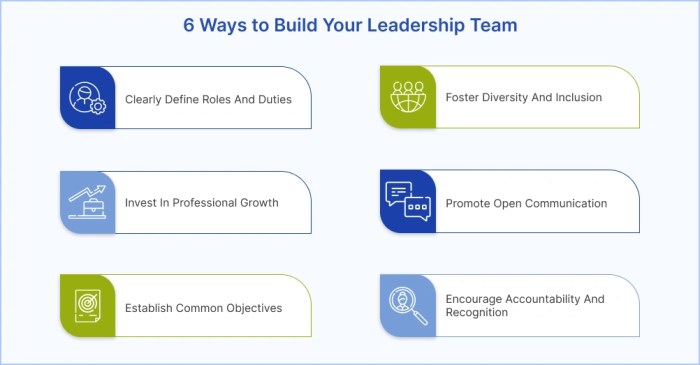Raise your people raise your capital – Raise your people, raise your capital. This insightful exploration delves into the crucial connection between developing your workforce and securing financial backing. We’ll examine how cultivating a strong team directly impacts your ability to attract investors and achieve business success. From understanding the core concepts to exploring practical strategies and real-world examples, this comprehensive guide will equip you with the knowledge and tools to navigate this critical aspect of business growth.
The interconnectedness of human capital and financial capital is a key driver of success in any venture. Building a skilled and engaged workforce isn’t just about boosting morale; it’s about creating a powerful asset that investors recognize and value. This article unpacks the strategies for nurturing talent, attracting and retaining top performers, and fostering a culture of growth, alongside the methods of securing funding and evaluating the various options available.
We’ll also provide a clear framework for understanding the timeline and expected outcomes of each strategy, offering a holistic approach to achieving your business goals.
Understanding the Phrase’s Meaning
The phrase “raise your people, raise your capital” encapsulates a fundamental truth about building a successful enterprise. It highlights the intertwined nature of human capital and financial capital, emphasizing that a strong workforce is crucial for generating the financial resources necessary for growth. This principle applies across various industries, from startups to established corporations.The core concept lies in the recognition that a motivated, skilled, and well-trained workforce is a significant asset, directly impacting a company’s ability to generate revenue and profitability.
Investing in people, therefore, is not just a philanthropic gesture, but a strategic imperative for long-term financial success. A company with a strong and engaged workforce can more readily attract and secure capital, and in turn, use that capital to further develop and empower its employees.
Defining “Raise Your People”
Investing in human capital goes beyond simply hiring employees. It encompasses a comprehensive approach to employee development and empowerment. This includes, but is not limited to, training programs, mentorship opportunities, skill-building workshops, and leadership development initiatives. These initiatives foster a culture of continuous learning and growth within the organization. In essence, “raising your people” is a multifaceted process that cultivates a skilled and dedicated workforce capable of achieving ambitious goals.
Interpreting “Raise Your People” in Business
“Raising your people” in a business context can manifest in various ways. One approach is to establish clear career paths and opportunities for advancement within the company. Another method involves providing employees with the tools and resources they need to perform their jobs effectively, which might include access to advanced technology, specialized software, or ongoing training. Furthermore, fostering a positive work environment that values employee input and recognizes achievements is essential.
Open communication, fair compensation, and recognition programs can all contribute to employee satisfaction and retention, thereby bolstering the workforce’s overall effectiveness.
Methods of “Raising Capital”
Raising capital involves various strategies, each with its own set of advantages and disadvantages. Debt financing, such as loans or lines of credit, provides immediate access to funds but comes with interest payments and potentially strict repayment schedules. Equity financing, through investments from venture capitalists or angel investors, often provides significant capital but dilutes ownership and necessitates adherence to investor guidelines.
Crowdfunding platforms offer an accessible avenue for raising capital from a large pool of individuals, but success hinges on effective marketing and campaign execution. Other methods include grants, which offer non-repayable funds for specific purposes, and bootstrapping, where funds are generated internally from existing resources and revenue.
Human Capital vs. Financial Capital
While both human capital and financial capital are essential for business success, their roles and importance differ. Human capital represents the knowledge, skills, and abilities of the workforce, while financial capital represents the funds available for investment and operation. Human capital is often considered intangible but profoundly impacts a company’s productivity, innovation, and profitability. Financial capital, conversely, is tangible and provides the resources needed to implement strategic plans and support the workforce.
Ideally, a strong balance between both types of capital ensures sustained growth and success.
Relationship Between Employee Development and Capital Acquisition
The table below illustrates the interconnectedness of employee skill development and capital acquisition strategies, highlighting expected outcomes and timelines.
| Employee Skill Development | Capital Acquisition Strategy | Expected Outcome | Timeline |
|---|---|---|---|
| Implementing a comprehensive training program focusing on digital marketing skills for sales team. | Securing a venture capital investment for expanding online marketing campaigns. | Increased sales conversion rates, improved brand awareness, and higher revenue generation. | 6-12 months |
| Developing a leadership program for managers to enhance team management and communication skills. | Seeking a loan to fund expansion into new markets and recruit more skilled employees. | Improved team productivity, reduced employee turnover, and increased market share. | 3-6 months |
| Investing in employee wellness programs to enhance employee retention and engagement. | Seeking a grant for employee development initiatives focused on health and wellness. | Reduced employee absenteeism, improved morale, and increased employee productivity. | 1-3 months |
Strategies for Raising People

Attracting and retaining top talent is crucial for any organization’s success. Investing in employee development fosters a motivated and skilled workforce, leading to increased productivity, innovation, and a positive company culture. This section dives into strategies for nurturing your employees, turning them into valuable assets, and maximizing their potential.A strong employee base isn’t just about hiring; it’s about nurturing and developing those employees into valuable assets for the company.
This involves a comprehensive approach that goes beyond basic training and encompasses fostering a positive company culture and ongoing development opportunities.
Employee Training and Development Programs
A robust training and development program is essential for employee growth and company success. These programs equip employees with the skills and knowledge needed to excel in their roles and contribute effectively to the organization’s goals. Effective training programs are designed to meet specific needs and address skill gaps. They go beyond simply imparting information; they foster a culture of continuous learning and development.
Raising your people is key to raising your capital. It’s all about building a strong team, and that takes deliberate practice, like what Jerry Rice emphasizes in his Masters Habit Jerry Rices Deliberate Practice. Focusing on skill development and consistent effort, both with your team and yourself, will ultimately lead to a more successful venture, and a more lucrative outcome.
Ultimately, the quality of your people will directly impact your capital.
Strategies for Attracting and Retaining Talent
Attracting and retaining top talent requires a multifaceted approach that addresses the needs and desires of prospective and current employees. Companies that prioritize employee well-being and offer competitive benefits packages often experience higher retention rates. Understanding the factors that drive talent and creating a compelling work environment are critical elements.Companies should cultivate a workplace culture that is welcoming, supportive, and engaging.
This includes fostering a sense of community, recognizing and rewarding contributions, and providing opportunities for professional development. Strong leadership and effective communication are also key components in attracting and retaining talent.
Building a Strong Company Culture
A strong company culture is more than just a set of values; it’s a lived experience for employees. It fosters a sense of belonging, purpose, and shared vision, which in turn motivates employees to contribute their best work. A culture that values open communication, respect, and collaboration can significantly improve employee morale and productivity. Promoting inclusivity and diversity is a critical component of building a positive and productive work environment.
Key Performance Indicators (KPIs) for Employee Development
Measuring the effectiveness of employee development programs is essential for ensuring that investments are yielding positive results. Key Performance Indicators (KPIs) provide a structured way to assess the impact of training and development initiatives. These KPIs can include metrics such as employee satisfaction scores, skill proficiency assessments, and performance improvement data. Tracking these KPIs allows for adjustments and improvements to training programs based on real-time data.
Examples of Successful Employee Development Initiatives
Many companies have successfully implemented employee development programs that have significantly impacted their workforce. For example, Google’s emphasis on continuous learning through internal training programs, workshops, and online resources has fostered a culture of innovation and excellence. Similarly, companies in the technology sector often offer mentorship programs to help junior employees develop their skills and accelerate their careers.
Different Employee Training Methods
| Training Method | Benefits | Drawbacks | Target Audience |
|---|---|---|---|
| Workshops | Interactive learning, focused skill development, networking opportunities | Can be expensive, time-consuming, and may not cater to individual learning styles | Employees needing specific skill enhancement, teams working on a project, or groups needing to learn a new skillset |
| Mentorship | Personalized guidance, career advice, knowledge transfer, role modeling | Requires a strong mentor-mentee relationship, may not address all skill gaps, potentially uneven mentor expertise | Junior employees, those seeking career advancement, employees in specific departments |
| Online Courses | Flexibility, cost-effectiveness, access to a wide range of courses, self-paced learning | Requires self-discipline, may not provide adequate support, potential for limited interaction | Employees needing to upskill in a particular area, those seeking continuous learning, or individuals seeking to broaden their knowledge base |
Strategies for Raising Capital
Securing funding is a crucial step for any aspiring entrepreneur or growing business. This often involves navigating a complex landscape of options, each with its own set of advantages and disadvantages. Understanding the nuances of various capital-raising strategies is paramount to making informed decisions that align with your business goals and financial circumstances. The right approach can significantly impact your company’s trajectory and long-term success.Capital raising strategies encompass a wide range of methods, from traditional loans to innovative crowdfunding campaigns.
Choosing the optimal strategy depends on several factors, including the stage of your business, the amount of capital needed, and your risk tolerance. Due diligence is critical in evaluating potential investors and ensuring a mutually beneficial agreement. A comprehensive business plan is indispensable for attracting investors and demonstrating the viability and potential of your venture.
Methods of Securing Funding
Various methods exist for securing funding, each with its own characteristics. Venture capital, angel investors, loans, and crowdfunding are common approaches.
- Venture capital involves investments from specialized firms that typically provide substantial capital to high-growth companies in exchange for equity. Venture capital firms often have a long-term investment horizon and a focus on companies with high potential for significant returns. Examples include firms like Sequoia Capital or Andreessen Horowitz, which often invest in tech startups.
- Angel investors are individual investors who provide capital to early-stage companies. They often have a significant network of contacts and experience in the industry, offering guidance and mentorship alongside funding. These investors often seek higher returns and may focus on specific industries or business models.
- Loans offer a way to secure funding without giving up equity. Banks and other financial institutions provide loans based on the borrower’s creditworthiness and the perceived value of the business. This can be a viable option for established businesses with a proven track record. Loans, however, often have strict repayment schedules and may require collateral.
- Crowdfunding leverages online platforms to raise capital from a large number of individual investors. This can be an effective way to raise smaller amounts of capital, often used for product development or marketing campaigns. Platforms like Kickstarter or Indiegogo enable projects to reach a wider audience and generate early interest.
Factors Influencing Capital Raising Strategy Choice
Several key factors play a crucial role in selecting the most suitable capital-raising strategy.
- The stage of the business is a critical consideration. Early-stage startups often rely on angel investors or venture capital for seed funding, while established companies may explore loans or private placements. The needs and risks associated with each stage differ significantly.
- The amount of capital required is another significant factor. Large-scale funding needs often necessitate venture capital, while smaller projects might be more effectively addressed through crowdfunding or angel investors.
- Risk tolerance and the desired level of control are important considerations. Venture capital investments often come with a trade-off of giving up a significant portion of ownership, while loans offer more control but potentially higher risk if the business does not perform as expected.
Due Diligence in Securing Capital
A thorough due diligence process is essential in evaluating potential investors and ensuring a mutually beneficial agreement.
- This involves careful scrutiny of the investor’s background, investment track record, and financial standing. Due diligence also includes a comprehensive review of the company’s financial statements, business plan, and operational structure.
- Understanding the investor’s expectations and aligning them with the company’s goals is also crucial. The negotiation process should ensure clarity and agreement on terms, including equity stakes, milestones, and exit strategies.
Importance of a Strong Business Plan
A well-structured business plan is critical for attracting investors and demonstrating the viability and potential of your venture.
Raising your people is key to raising your capital. Happy employees are productive employees, and understanding what makes people happy can be a game changer. Check out this insightful article on 10 Things Happy People Do Differently 10 Things Happy People Do Differently for practical strategies. Ultimately, a happy team creates a stronger foundation for achieving your financial goals.
It all comes back to raising your people, and raising your capital.
- It provides a roadmap for the business, outlining its goals, strategies, and financial projections. A clear and concise plan helps investors understand the value proposition of the company and its potential for profitability.
- The plan should articulate the market opportunity, the competitive landscape, and the management team’s experience. It should also include detailed financial projections, demonstrating the potential for return on investment.
Comparison of Capital-Raising Strategies
Different capital-raising strategies offer varying levels of risk and reward.
| Funding Source | Pros | Cons | Suitability |
|---|---|---|---|
| Venture Capital | Large funding amounts, expertise, network access | Loss of control, high dilution of ownership, stringent expectations | High-growth startups, established companies needing significant capital |
| Angel Investors | Mentorship, guidance, early-stage support | Limited funding, potential for conflicting priorities | Early-stage startups, innovative ventures, startups needing initial funding |
| Loans | Retains control, no equity dilution | Strict repayment schedules, potential for collateral requirements | Established businesses with a proven track record, businesses needing short-term funding |
| Crowdfunding | Broad reach, early customer acquisition, low upfront cost | Limited funding amounts, significant time commitment, dependence on platform | Product launches, marketing campaigns, projects needing initial support |
Interconnectedness of People and Capital

Raising capital isn’t just about numbers; it’s about building a compelling narrative, and a crucial part of that narrative is the people behind the project. A strong team, with developed skills and a shared vision, not only enhances the quality of the product or service but also significantly impacts investor confidence and long-term financial stability. Understanding this interconnectedness is key to successful fundraising and sustained growth.A well-trained and engaged workforce demonstrates a company’s commitment to its future and its ability to execute its plans.
This commitment, often overlooked in the capital raising process, is a powerful signal to potential investors. A company with a strong foundation in employee development and retention is more likely to attract and retain capital, creating a positive feedback loop for sustained success.
Employee Development and Capital Attraction
Employee development directly impacts a company’s ability to secure capital. Skilled and motivated employees are essential for delivering on promises, meeting deadlines, and exceeding expectations. Investors are more likely to trust a company with a track record of employee development, recognizing that a strong team is crucial for long-term success. Investing in training, mentorship programs, and skill-building initiatives demonstrates a company’s commitment to its employees’ growth and, by extension, to its own future.
Raising your people is crucial for raising your capital, and a key aspect of that is fostering a positive environment. A new study, ” Dads Mood Impacts Child Development “, highlights how crucial a supportive and emotionally stable home environment is for children’s well-being. Ultimately, nurturing a healthy and thriving community is the bedrock of financial success, as a strong workforce, driven by happy, well-adjusted individuals, fuels economic growth.
This forward-thinking approach often resonates with investors seeking ventures with a sustainable future.
Strong Teams and Investor Confidence
A strong team fosters investor confidence by demonstrating competence, collaboration, and a shared vision. Investors are looking for more than just a product or service; they want to see a cohesive team with the ability to execute. A team with clear roles, defined responsibilities, and a history of successful collaboration builds trust and confidence in the company’s ability to deliver on its promises.
This, in turn, translates to a more favorable view among potential investors. The team’s collective experience and expertise can be a significant factor in attracting capital.
Employee Retention and Long-Term Financial Stability
Employee retention is a critical factor in long-term financial stability. High employee turnover often signals issues within the company, such as poor management practices, inadequate compensation, or a lack of growth opportunities. This can be a red flag for potential investors, raising concerns about the company’s ability to maintain its momentum and profitability. Conversely, a company with a strong track record of employee retention demonstrates a healthy internal environment, attracting investors who value stability and sustainability.
This also suggests that the company has a robust and engaging work culture, contributing to higher productivity and better performance.
Successful Examples of Combined People and Capital
Several companies have successfully combined people development and capital raising. For instance, companies like Patagonia, known for their commitment to environmental sustainability and employee well-being, have consistently attracted investors who value their ethical practices and long-term vision. Similarly, companies like Google, with their emphasis on employee development and innovative culture, have consistently raised significant capital due to investor confidence in their people and their ability to innovate.
These examples demonstrate that a commitment to employee development can be a powerful driver of capital attraction.
Risks and Challenges
While the interconnectedness of people and capital offers significant advantages, there are potential risks and challenges. Investing heavily in employee development can be expensive and may not always translate directly into immediate returns. Furthermore, managing a large and diverse workforce can be complex, requiring strong leadership and effective communication strategies. Additionally, there’s a risk of attracting investors who prioritize short-term gains over long-term growth, potentially leading to a conflict of interest between company values and investor objectives.
The balance between short-term needs and long-term growth strategies is crucial in navigating these challenges.
Correlation Between Employee Engagement and Investor Returns
| Employee Engagement Metrics | Investor Sentiment | Financial Performance | Business Growth |
|---|---|---|---|
| High employee satisfaction, low turnover rates, strong employee advocacy | Positive investor sentiment, increased valuations | Improved profitability, higher revenue growth | Rapid expansion, market leadership |
| Moderate employee engagement, moderate turnover rates, mixed employee advocacy | Neutral investor sentiment, stable valuations | Stable profitability, moderate revenue growth | Steady growth, maintaining market position |
| Low employee engagement, high turnover rates, negative employee advocacy | Negative investor sentiment, decreased valuations | Decreased profitability, lower revenue growth | Slow growth, potential market share loss |
Illustrative Examples
Raising capital and building a strong team are intrinsically linked. A successful company recognizes this interconnectedness, fostering a culture of continuous employee development alongside aggressive capital acquisition strategies. This section provides practical examples illustrating how effective employee development programs and a supportive company culture can positively impact capital raising efforts, and conversely, how a lack of investment in people can hinder the process.These examples demonstrate the crucial role of a well-rounded approach that prioritizes both people and capital.
By understanding the interplay between these two critical elements, companies can create a sustainable and profitable trajectory.
Successful Implementation of Employee Development and Capital Raising
A tech startup, “Innovate Solutions,” implemented a comprehensive employee development program that included mentorship programs, skill-building workshops, and opportunities for cross-functional projects. The program focused on cultivating leadership skills, technical expertise, and collaborative abilities. Simultaneously, Innovate Solutions actively sought venture capital. The combination of a skilled and motivated workforce and a strong financial foundation allowed them to successfully secure seed funding, further accelerating their growth trajectory.
Their employee development initiatives not only improved team performance but also projected a positive image to potential investors, showcasing a company committed to long-term success and growth.
Negative Impact of Lack of Employee Development on Capital Raising
Consider “Static Solutions,” a software company that neglected employee development. Employees lacked opportunities for professional growth and skill enhancement, leading to low morale and high turnover. This instability made Static Solutions appear less attractive to potential investors. Their inability to secure funding ultimately hampered their growth trajectory and led to a decline in profitability. The company’s failure to invest in employee development directly impacted its ability to attract and retain top talent and ultimately, raise capital.
Case Study of a Successful Startup
“Growth Spark,” a digital marketing agency, effectively combined people and capital strategies. They built a strong company culture that fostered open communication, collaboration, and continuous learning. Growth Spark’s mentorship program paired experienced marketers with junior staff, nurturing talent and fostering a sense of community. This approach not only improved employee performance but also attracted investors who recognized the agency’s commitment to employee growth and long-term success.
Growth Spark effectively leveraged its employee development program as a key differentiator and a compelling narrative to secure seed funding, highlighting their commitment to both people and profit.
Impact of Strong Leadership on Employee Development and Capital Acquisition, Raise your people raise your capital
Strong leadership plays a pivotal role in driving both employee development and capital acquisition. Leaders who champion employee growth, provide mentorship, and foster a positive work environment attract and retain top talent. This positive work environment, in turn, projects a sense of stability and growth to potential investors, making the company more attractive and increasing the likelihood of securing funding.
A strong leader actively promotes employee development, fostering a culture of continuous improvement that attracts investors seeking companies with a clear vision and a committed workforce.
Role of Mentorship Programs in Nurturing Talent and Attracting Investors
Mentorship programs provide invaluable support to employees, fostering their professional growth and enhancing their skillsets. These programs cultivate a strong sense of community and mentorship opportunities that are a testament to a company’s commitment to employee development. The benefits of a well-structured mentorship program extend beyond employee development; they also attract investors who recognize the value of a well-trained and motivated workforce.
Investors often see mentorship programs as an indication of a company’s long-term vision and commitment to nurturing future leaders, which translates into a higher likelihood of securing funding.
Company Culture Encouraging Employee Growth and Capital Attraction
“A culture of continuous learning, collaboration, and open communication is essential for attracting investors. We encourage employee development through regular training, mentorship programs, and cross-functional projects. Our transparent communication ensures that investors understand our values and vision for the future.”
A company culture that prioritizes employee growth and development fosters a sense of community and belonging. Regular training programs, internal knowledge sharing, and a supportive atmosphere for feedback are key components of such a culture. Transparent communication about the company’s progress and financial performance builds trust with investors, showcasing the company’s commitment to long-term success. Furthermore, recognition and reward systems motivate employees, while open communication channels empower them to share ideas and contribute to the company’s growth.
Final Conclusion: Raise Your People Raise Your Capital
In conclusion, raising your people and raising your capital are not separate endeavors but rather two sides of the same coin. A robust workforce, empowered by effective training and development, directly translates to a stronger business proposition, which in turn attracts more favorable investment opportunities. By understanding the interplay between these two critical elements, you can create a dynamic and sustainable growth engine for your venture.
The examples and strategies provided offer a roadmap for achieving both employee development and capital acquisition, ultimately leading to long-term success and financial stability.










